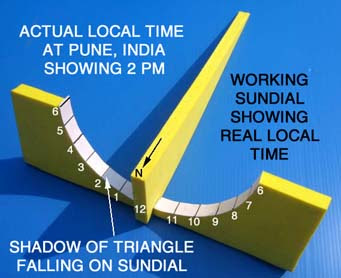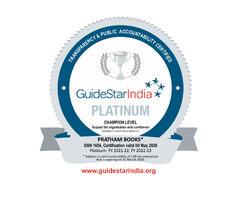Making Science Fun to Learn : Arvind Gupta

Six small magnets, an old slipper and a pencil. That is all it takes to make a toy that explains magnetic levitation, the principle on which Maglev trains run. This was also the toy that set a young girl on her path to recognition, that came in the form of a minor planet being named after her.She had played with this toy, made from scrap, like many others at the Muktanagan Vigyan Shodhik (MVS), the Children’s Science Centre at Pune’s Inter-University Centre for Astronomy and Astrophysics (IUCAA). Arvind Gupta, who heads the Children’s Science Centre, has a self-imposed mission in life: Give a happy childhood to children to have a peaceful society.
The MVS office is crammed with toys like a water sprinkler made using straw, an electric motor made using a 1.5-volt battery, a pump to inflate balloons and toys made using old newspapers, pins, nails, empty water bottles, cycle tubes, CDs and other scrap. It is a treasure trove for a child to know how things work.Mr Gupta graduated from IIT-Kanpur, with a degree in electrical engineering, and had a short stint at Telco (now Tata Motors) in Pune. He then decided to work and make science fun for school children. “Children develop a distaste for science due to the sophisticated instruments in school laboratories,” he said.
These toys make children feel that science can be easy to learn. He shows some geometrical shapes that have been made using matchsticks and valve tubes from a bicycle. This model easily explains that a triangle is the most rigid geometrical shape. This ease of teaching is perhaps the reason Mr Gupta became a popular personality for a generation of children who watched his science programmes on national television.
To take science teaching aids to every child in the world, the four-member MVS photographs the toy-making process using a simple household camera and uploads the clip on the web in several languages. Diagrams and text are also used to explain the making of the toy. Mr Gupta trusts the professionals in the system and the power of the digital world to popularise the beauty and simplicity of science.
Digitisation and knowledge-sharing are the core principles of his work. A CD priced at Rs 12, containing 1,000 books, 5,000 photos and 150 one-minute films, is distributed to thousands of schools and teachers. With the government encouraging the use of computers in all schools, Mr Gupta is hopeful that the CDs will reach children in the remote parts of the country. He has translated 70 scientific books in the last 30 years and put more than 2,000 books on his website.
Read the entire article here. Visit Arvind Gupta’s website.
Image Source










